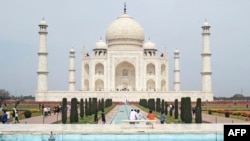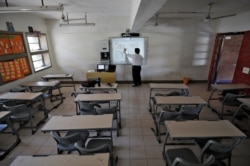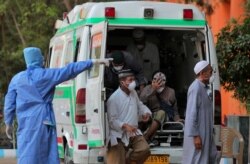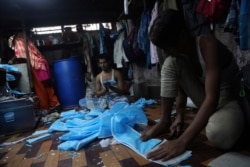India has closed the iconic Taj Mahal, one of the world’s most visited tourist sites, as it battles the spread of coronavirus.
The Culture Ministry said Tuesday it was “imperative” that people keep away from the monument in the city of Agra, whose allure has apparently not been dimmed by the coronavirus scare. Each day, about 20,000 Indian and foreign tourists visit the Taj Mahal, a number that usually doubles on weekends.
Harsh Singh, who traveled with his family from New Delhi, said there were huge crowds when he visited the monument on Saturday. “The line for tickets was really long,” he said.
Dozens of other monuments that are popular with tourists have also been shut.
The closure of top tourist sites comes as states across much of India shut down schools, colleges, shopping malls, theaters and cancel sporting events in a bid to halt the outbreak of the respiratory disease.
India’s tally of confirmed coronavirus cases stands at 130 and the death toll at three. Health experts say those numbers may not fully reflect the extent of the disease’s spread in the world’s second-most populous nation due to limited testing done so far.
About 6,000 people have been tested in the country of 1.3 billion people, focusing mainly on those who came from abroad and the people who had contact with them.
Amid calls to ramp up testing, Indian officials announced Tuesday that they are increasing the number of laboratories and ordering more testing kits.
Health experts warn that India has entered a critical phase in which it needs to halt community transmissions.
Authorities have begun tightening restrictions as cases increase. In the financial hub of Mumbai, officials said they will stamp “Home Quarantined” in indelible ink on the wrists of all those who have been ordered to self-isolate.
It has been a challenge to keep people quarantined as many do not take the instructions seriously.
In a Mumbai suburb, local media reported that 11 people, who had been isolated after returning from Dubai, fled a hospital, leading to a manhunt for them.
Cities like Mumbai, where hundreds of thousands live in overcrowded slums and travel on packed transport networks, pose the greatest challenge in controlling the outbreak in India.
India was among the first countries to introduce screening at airports. Last week, it also imposed some of the world's toughest border measures, suspending most visas and shutting down most land borders.
The nation is also trying to reach out to people living in its vast rural areas and in crowded slums through mobile phones, television and social media - all mobile calls begin with a recorded health message.
Still, there is wide concern that all this may not be enough. The Times of India newspaper, in an editorial on Tuesday, advised that India “lock down now,” saying it should learn from countries like Italy and Spain where the numbers rose exponentially after crossing the 100-person tally.
“Given decrepit health care and densely concentrated urban populations, catastrophe awaits if authorities don’t act quickly and decisively,” it said.
While the number of cases in South Asian countries such as India, Bangladesh, Nepal and Bhutan remains relatively small, there are fears that the populous region will not be able to cope if the pandemic takes hold.
On Sunday, Indian Prime Minister Narendra Modi, in a video conference with other South Asian leaders, offered $10 million to set up an emergency regional fund to tackle the coronavirus outbreak.
“Any of us can use the fund to meet the cost of immediate actions,” Modi said. He also offered rapid response teams and other expertise to deal with the crisis to smaller countries in the region.











